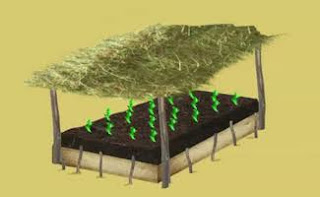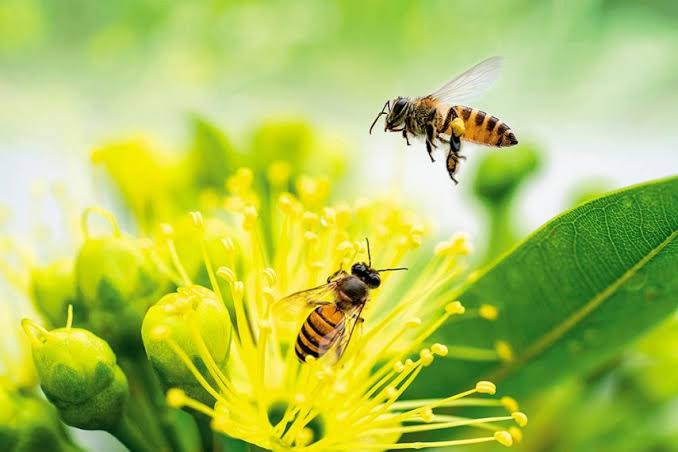Caliandra calothyrus Growth and management to scale up Agriculture
Caliandra calothyrus is a non-thorny fertilizer tree which belongs to family leguminaceae. It is characterized by having deep roots, compound bi-pinnate leaf type and pink flowers. It was introduced in tropical countries like Uganda from Mexico and South America. It grows in a wide range of climatical conditions and soil types of acidic state, water logged areas but the presence of frost can affect it so greatly. It is a relatively fast growing tree and yields faster benefits in the first year after planting. The tree can produce fodder continuously for more than ten years
It's benefitial to grow caliandra because of the vital roles it plays with in an ecosystem including:
Provide high quality fodder supplements for livestock. Caliandra leaves can be harvested and fed to live stock to improve milk production of both dairy cattle and goats. It can also be fed to other types of live stock such as sheep, rabbits, and chicken.
Soil fertility improvement. Caliandra calothyrsus being a leguminous tree species has root nodules that fix atmospheric nitrogen into the soils which improve on soil fertility because nitrogen is one of the nutrient for plant growth.
Fuel wood.
Caliandra if Lef to grow uncut can provide good quality fuel wood. The tree burns better and has less smoke if left to dry well before use.
Stakes for climbing beans and tomatoes. Stakes produced by Caliandra calothyrsus are good support for other plants such as climbing beans and tomatoes which has less weaker stems.
Stabilizes soils and water conservation structures. Caliandra has deep roots system which when planted along soil conservation structures plays a significant role in holding the soil together. It performs well when planted adjacent to lines of Napier grass on “ fanya juu” and “fanya chini” terraces
Bee forage tree. Caliandra if grown has an additional property of providing forage to bees to manufacture honey for human consumption, Research shows that honey obtained from Caliandra source flowers I completely of higher nutrients compared to other, bee hives located in the fodder banks 0f Caliandra colonize very faster even their productivity is faster since bees don’t move longer distance to forage
Establishing Caliandra nursery
Locate your nursery near a water source, the nursery should be 1 meter wide and of any length as long as you have enough space but allows 0.6 meters (2feets) between two adjacent seedbeds for easy management of the seedbed. A
Afterdeciding where to put the nursery, of any dimension, add farm yard manure to 4 parts of soil and mix thoroughly. Pile the mixture of soil and manure to make a raised seed bed and level it. Support the seedbeds with material like banana stems
Sawing Caliandra seeds
Before sawing the seeds, first soak them in water for 2 days to break seed dormancy. Make furrows of 2centimeters deep in your seed bed to allow accurate sawing, place the seeds in the furrow and cover them lightly with soil. Space the furrows 10 centimeters apart. Water the bed immediately after sawing and cover the bed with dry grass, After the seedling have reached transplanting, put them in polythene tubular pots with soils mixed with manure. Continue watering the transplanted seedlings. Apply liquid inoculants by mixing it with water and sprinkle it to the seedlings until when they reached 3month for transplanting in the main garden.
Care and management of Caliandra nursery
Watering: Carefully observe the moisture in the bed and water. Watering should be done twice a day (in the morning and evening) depending on the moisture content in the nursery bed shading the seedlings
Make a shade structure 1 meter in height and cover lightly with grass while ensuring some light to pass through. Avoid using branches from eucalyptus since when it falls will inhibit germination of other species. As seedlings grow minimize the shade to make the seedlings get used to full sunlight they are going to face in the main garden.
Weeding: Remove all other types of weeds as soon as you notice them to ensure better growth of seedlings.
Protection against pests: Protect the seedlings against pests such as grasshoppers, mole crickets, cutworms, which may cause severe losses.
How to establish Caliandra calothyrsus on a prepared seedbed
Obtain 3(three) month fully grown seedlings from the nursery bed, Dig appropriate holes, Add farm yard manure and mix thoroughly if available. Water the hole and finally place the seedling in a prepared hole and cover well.
The spacing of seedlings should be 1mx1m in a pure stand. Caliandra can be established on boundary of the farm on both internal and external boundaries, or around the homestead to form hedge or along the soil conservation structure of Napier grass line at 0.5m by 0.5m and or in a mixed stand with Napier grass one line of Caliandra after two lines of Napier.
Care and management of field planted Caliandra calothyrsus
Weed immediately one week after planting to reduce weed completion. Prune off excess stems to prevent closeness between the lines. Trim off the over growing tops and feed the livestock
Pests and diseases affecting Caliandra calothyrsus
Caliandra can be attacked by various pests including; cutworms, scale insects, snails, rats, grass hoppers at seedling stage. Diseases include; Blossom blight causing poor pod formation, Blotch disease caused by Camptomeris Caliandra, Pink disease (phanerochacta), Dieback causing the death of the entire growing tip, Rust caused by ravenelia species
Farmers are advised and encouraged to use locally made pesticides from tobacco and garlic to act as repellents of Caliandra pests
It's benefitial to grow caliandra because of the vital roles it plays with in an ecosystem including:
Provide high quality fodder supplements for livestock. Caliandra leaves can be harvested and fed to live stock to improve milk production of both dairy cattle and goats. It can also be fed to other types of live stock such as sheep, rabbits, and chicken.
Soil fertility improvement. Caliandra calothyrsus being a leguminous tree species has root nodules that fix atmospheric nitrogen into the soils which improve on soil fertility because nitrogen is one of the nutrient for plant growth.
Fuel wood.
Caliandra if Lef to grow uncut can provide good quality fuel wood. The tree burns better and has less smoke if left to dry well before use.
Stakes for climbing beans and tomatoes. Stakes produced by Caliandra calothyrsus are good support for other plants such as climbing beans and tomatoes which has less weaker stems.
Stabilizes soils and water conservation structures. Caliandra has deep roots system which when planted along soil conservation structures plays a significant role in holding the soil together. It performs well when planted adjacent to lines of Napier grass on “ fanya juu” and “fanya chini” terraces
Bee forage tree. Caliandra if grown has an additional property of providing forage to bees to manufacture honey for human consumption, Research shows that honey obtained from Caliandra source flowers I completely of higher nutrients compared to other, bee hives located in the fodder banks 0f Caliandra colonize very faster even their productivity is faster since bees don’t move longer distance to forage
Establishing Caliandra nursery
Locate your nursery near a water source, the nursery should be 1 meter wide and of any length as long as you have enough space but allows 0.6 meters (2feets) between two adjacent seedbeds for easy management of the seedbed. A
Afterdeciding where to put the nursery, of any dimension, add farm yard manure to 4 parts of soil and mix thoroughly. Pile the mixture of soil and manure to make a raised seed bed and level it. Support the seedbeds with material like banana stems
Sawing Caliandra seeds
Before sawing the seeds, first soak them in water for 2 days to break seed dormancy. Make furrows of 2centimeters deep in your seed bed to allow accurate sawing, place the seeds in the furrow and cover them lightly with soil. Space the furrows 10 centimeters apart. Water the bed immediately after sawing and cover the bed with dry grass, After the seedling have reached transplanting, put them in polythene tubular pots with soils mixed with manure. Continue watering the transplanted seedlings. Apply liquid inoculants by mixing it with water and sprinkle it to the seedlings until when they reached 3month for transplanting in the main garden.
Care and management of Caliandra nursery
Watering: Carefully observe the moisture in the bed and water. Watering should be done twice a day (in the morning and evening) depending on the moisture content in the nursery bed shading the seedlings
Make a shade structure 1 meter in height and cover lightly with grass while ensuring some light to pass through. Avoid using branches from eucalyptus since when it falls will inhibit germination of other species. As seedlings grow minimize the shade to make the seedlings get used to full sunlight they are going to face in the main garden.
Weeding: Remove all other types of weeds as soon as you notice them to ensure better growth of seedlings.
Protection against pests: Protect the seedlings against pests such as grasshoppers, mole crickets, cutworms, which may cause severe losses.
How to establish Caliandra calothyrsus on a prepared seedbed
Obtain 3(three) month fully grown seedlings from the nursery bed, Dig appropriate holes, Add farm yard manure and mix thoroughly if available. Water the hole and finally place the seedling in a prepared hole and cover well.
The spacing of seedlings should be 1mx1m in a pure stand. Caliandra can be established on boundary of the farm on both internal and external boundaries, or around the homestead to form hedge or along the soil conservation structure of Napier grass line at 0.5m by 0.5m and or in a mixed stand with Napier grass one line of Caliandra after two lines of Napier.
Care and management of field planted Caliandra calothyrsus
Weed immediately one week after planting to reduce weed completion. Prune off excess stems to prevent closeness between the lines. Trim off the over growing tops and feed the livestock
Pests and diseases affecting Caliandra calothyrsus
Caliandra can be attacked by various pests including; cutworms, scale insects, snails, rats, grass hoppers at seedling stage. Diseases include; Blossom blight causing poor pod formation, Blotch disease caused by Camptomeris Caliandra, Pink disease (phanerochacta), Dieback causing the death of the entire growing tip, Rust caused by ravenelia species
Farmers are advised and encouraged to use locally made pesticides from tobacco and garlic to act as repellents of Caliandra pests
By
Wandera Alexander
Fetcher Youth Green Africa.
fetcheragroforestrycentre@gmail.com









Comments
Post a Comment